Just how good is Intel Lunar Lake AI PC chip’s performance?
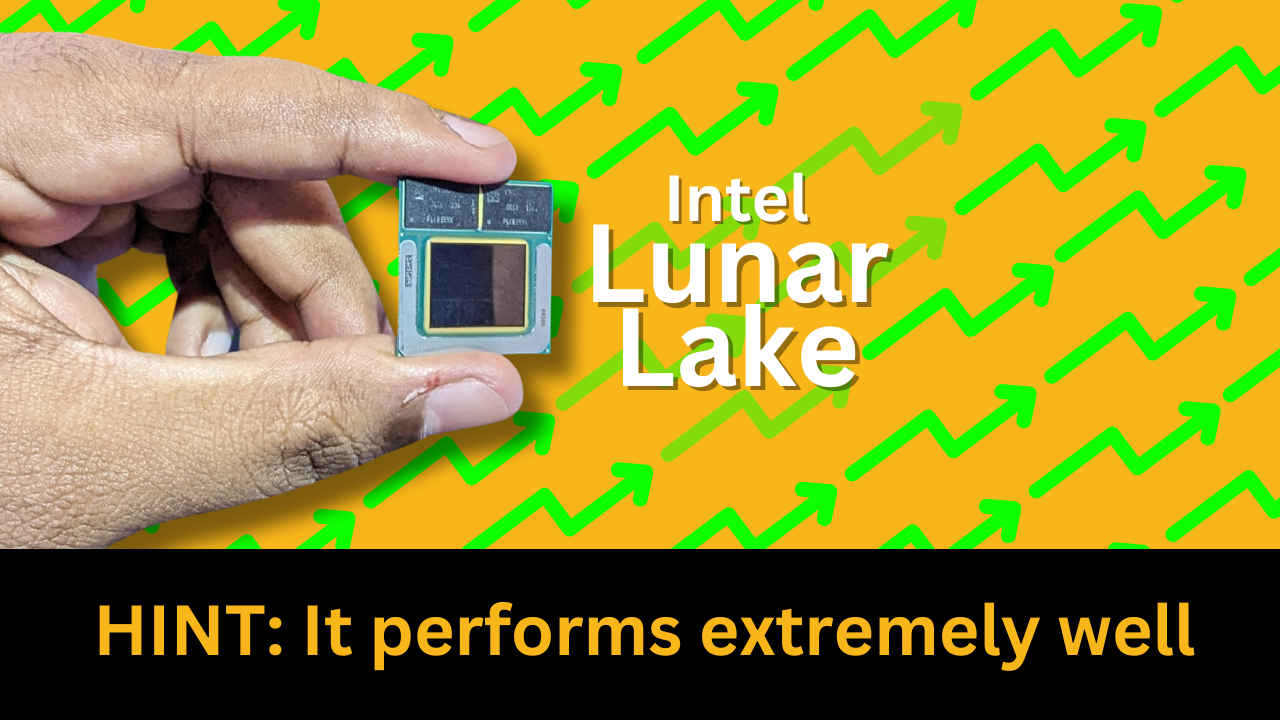
After releasing its first ‘AI PC’ branded Meteor Lake chip in December 2023, Intel wasted no time in unveiling its successor – the Lunar Lake platform – at Computex in June 2024. Amidst a frenzy of announcements from competing chipmakers like AMD and Qualcomm, Intel CEO Pat Gelsinger had the last laugh: Lunar Lake’s CPU + GPU + NPU combo offers up to 120 TOPS for AI workloads – higher than both of Intel’s key competitors’ announced AI PC chips (AMD Ryzen AI 300 Series and Qualcomm Snapdragon X Elite) for now.
 Survey
SurveyAlso read: Intel Lunar Lake chip aims to power new age of AI PCs at scale: Here’s how

In this article, we will see a series of early performance benchmarks of the Intel Lunar Lake chip platform – from battery to gaming, AI image creation to on-device local LLM user scenarios. Take a look…
Intel Lunar Lake specifications
The Lunar Lake chip platform is Intel’s next-gen SoC for AI PCs in 2024. Intel Lunar Lake’s compute tile sports a brand new 8-core hybrid design — where four P-cores offer peak single threaded performance, and four E-cores offer twice the vector and AI throughput than before. Together, both the P- and E-cores offer over 50% to 80% improvements on performance-per-watt, which is huge! Intel claims significant gains in the Xe2 GPU with 80% more gaming performance and five times AI throughput than previous generation. There’s NPU 4 with three times more TOPS (up to 48), and IPU for improved camera performance with reduced power consumption on the Intel Lunar Lake platform.
According to Intel’s own data, Lunar Lake sets a new benchmark for performance and power management on an Intel SoC. The new power delivery integrated controller, enhanced Thread Director, memory-side cache and improved E-core cluster bring up to 60% better battery life in real-life usages.
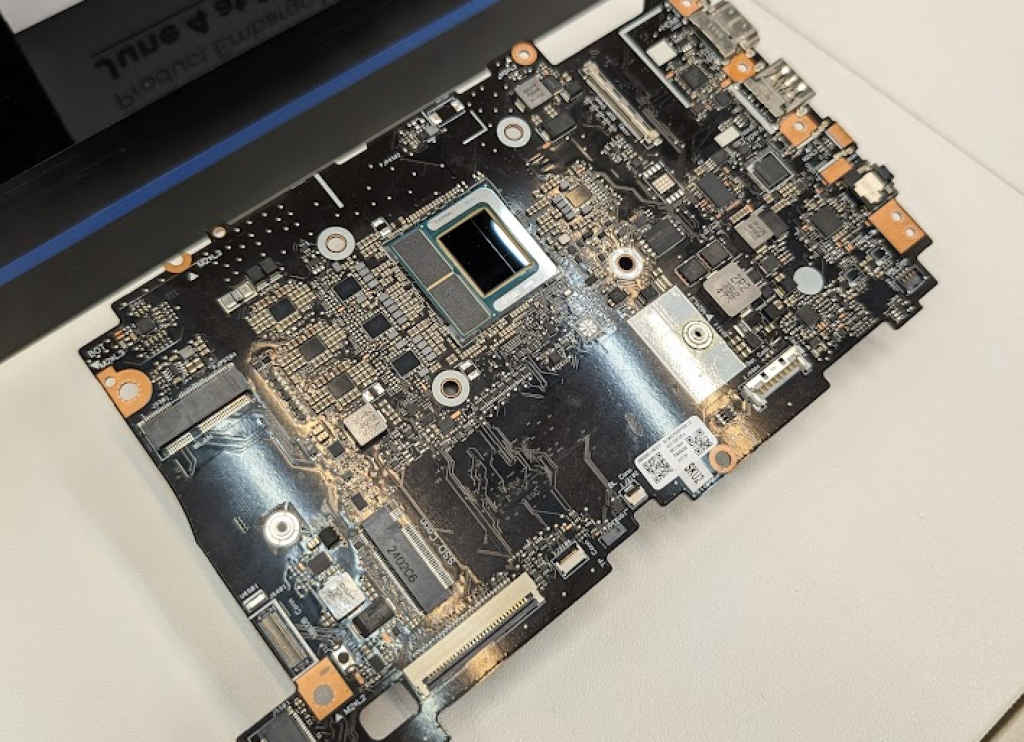
Intel Lunar Lake’s upgraded connectivity suite integrates Wi-Fi 7.0, Bluetooth 5.4, PCIe Gen5 and PCIe Gen4 ports, and Thunderbolt 4 ports — as seen here on an upcoming ASUS laptop’s PCB. It’s so small, isn’t it? Which means more room for battery!
Intel NUC: Small size, big performance
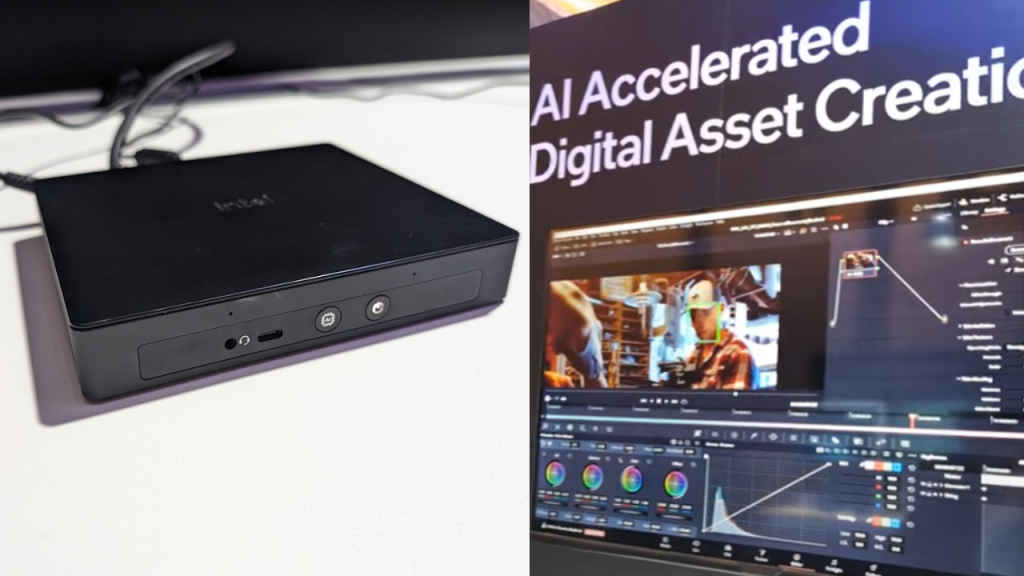
Say hello to Intel’s AI PC Developer Kit, a tiny mini-PC / NUC box based on Intel Lunar Lake chip for early adopters and software makers to play around with unlocking maximum efficiency and gains out of Intel’s x86 platform. In a demo I witnessed, it easily processed a 5K 60fps video file with AI-assisted face recognition and tracking frame by frame in a little over a minute, without heating up or generating any noise. Delivers silent and cool operation!
Lunar Lake power efficiency
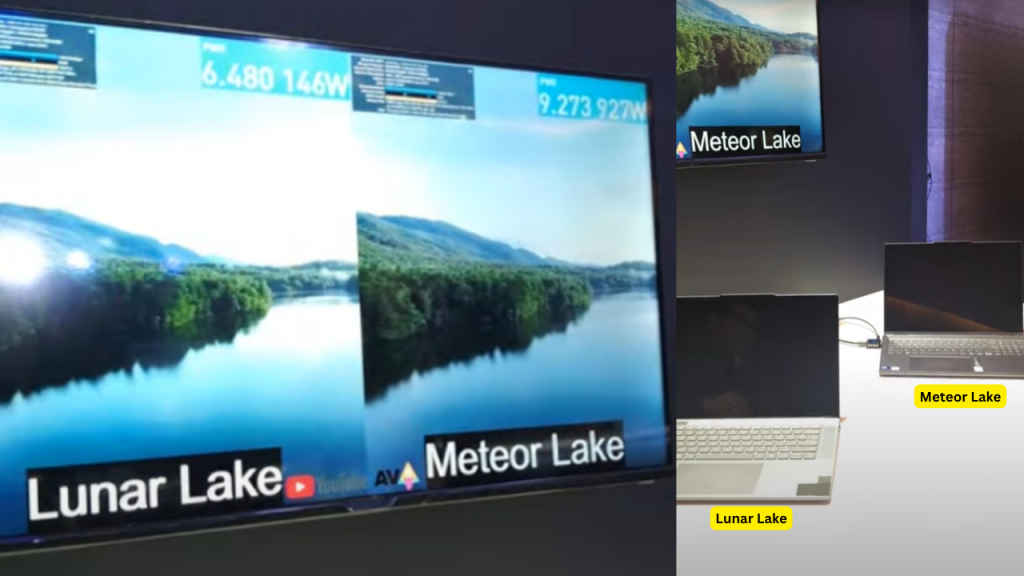
Another big claim made by Intel is that Lunar Lake is up to 40% more power efficient than Intel Meteor Lake released last year. Intel’s engineers demonstrated this with a live YouTube 4K AV1 video running on two identical laptops side-by-side. There was absolutely no drop in frames or other performance at almost half as much power draw on the Lunar Lake vs Meteor Lake. I must say that’s quite impressive.
Intel Lunar Lake on-device Stable Diffusion in GIMP

I saw another glimpse into the future of AI PCs on Intel Lunar Lake, where Stable Diffusion was running inside GIMP imaging software to allow AI image generation 100% locally. I tried several prompts – both by typing on keyboard and voice input (supported by OpenVINO) where images were consistently created within 5-7 seconds vs 15-20 seconds on previous gen hardware.
Gaming performance of Intel Lunar Lake Xe2 GPU
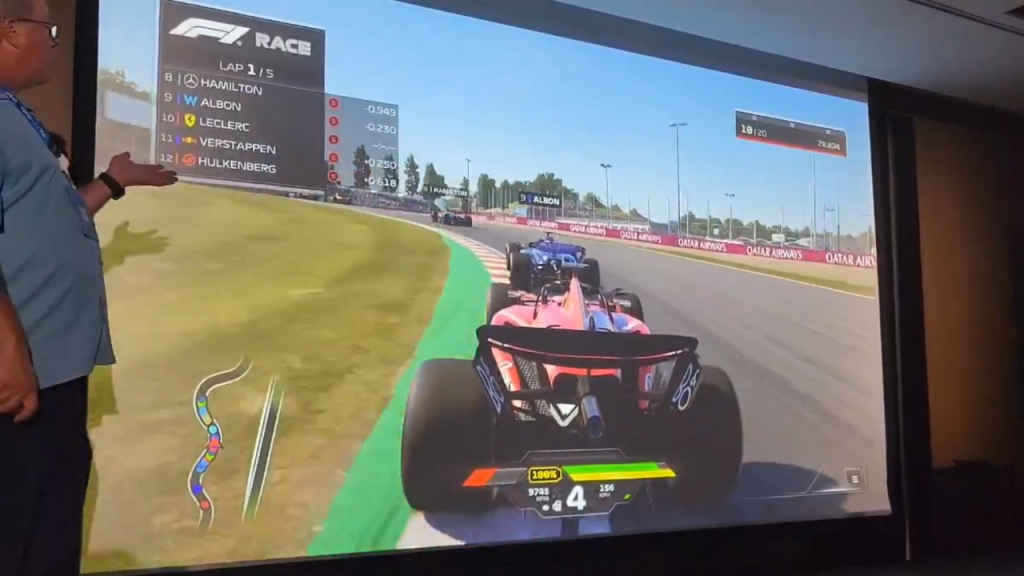
Intel Lunar Lake offers peak 120 TOPs across its platform (CPU+GPU+NPU), of which the new Xe2 GPU engine alone delivers 67 peak TOPs of AI workload processing goodness! Compared to Meteor Lake’s GPU, the Xe2 GPU is about 1.5 times better overall, according to Intel showcasing its improved graphics chops. Intel’s Tom Petersen showed off F1 2024 running on high settings on an Intel Lunar Lake laptop delivering consistent 60 fps at 1080p, with ray tracing enabled no less!
Early hands-on Lunar Lake laptops
One of the first laptops to sport an Intel Core Ultra 9 (Lunar Lake) processor, the ASUS ZenBook S14. It’s 1.1 cm, weighs 1.2 kg, has premium ceramic coating on aluminium screen lid. Display supports 3K 120Hz, paired with a 72Wh battery. Runs on Windows 11 with a dedicated Copilot key!
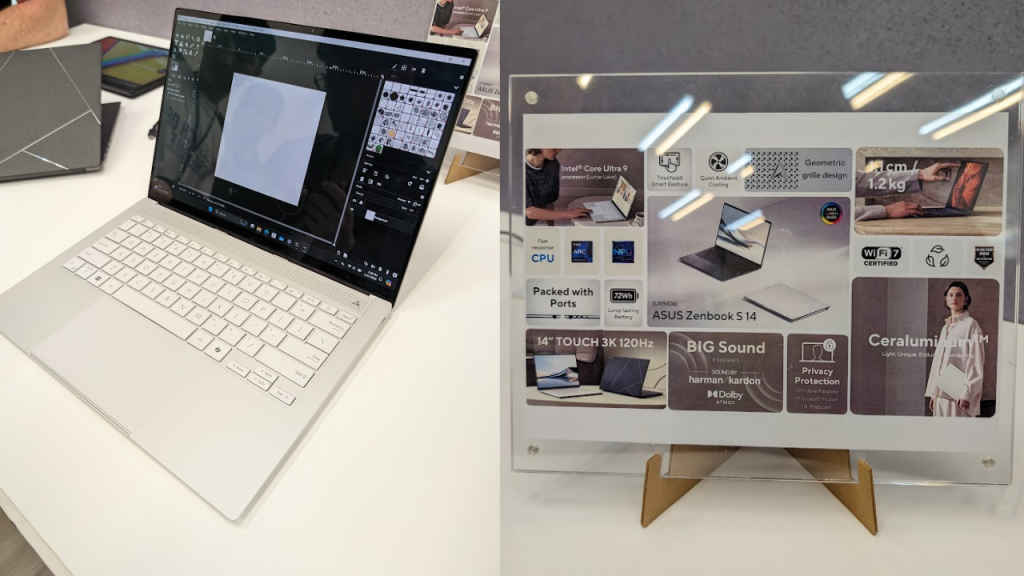
Another laptop I saw was the ASUS ExpertBook P5 running on Intel Lunar Lake chip. The premium business-focused notebook offers top notch AI for Business and Security tools, like Meeting Summary, Document Summary, Semantic Search and more. With NIST-155 commercial grade BIOS security, full aluminium body, and a 14-inch 2.5K screen with 16:10 aspect ratio, this notebook is a great example of an AI PC for business!
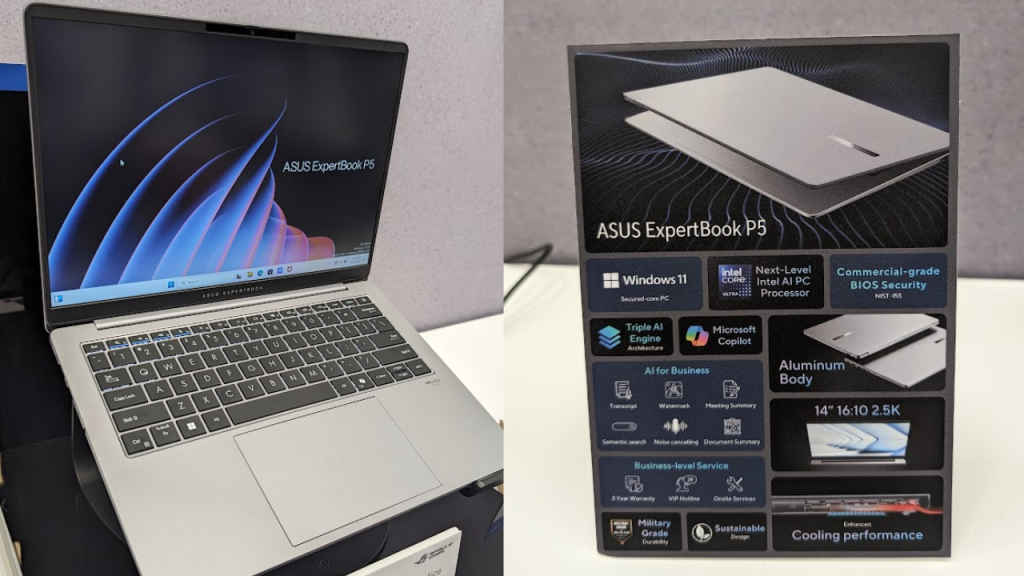
That’s all I have to say about Intel Lunar Lake chip’s performance for now. Laptops and devices powered by Intel Lunar Lake chip are expected to arrive by Q3 2024, so around Diwali here in India more or less. Stay tuned for more exciting developments in the AI PC market, as Intel tries to maintain its dominance in this space.
Also read: Computex 2024: Hands-on with Snapdragon X Elite AI PC laptops from Acer, Lenovo, Samsung, Microsoft
Jayesh Shinde
Executive Editor at Digit. Technology journalist since Jan 2008, with stints at Indiatimes.com and PCWorld.in. Enthusiastic dad, reluctant traveler, weekend gamer, LOTR nerd, pseudo bon vivant. View Full Profile